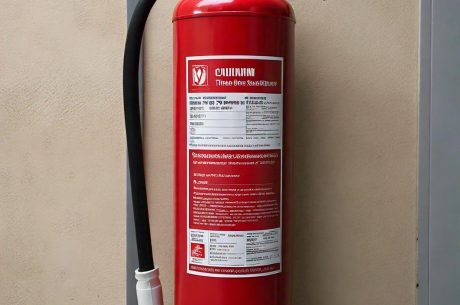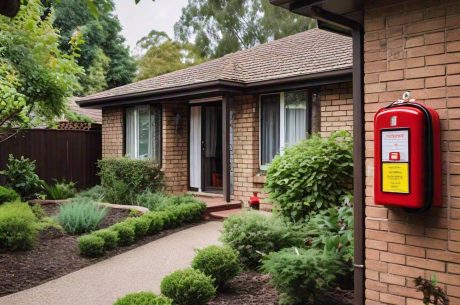Table of Contents
To Prevent Fires in Homes and maintenance: As the temperatures drop and the days get shorter, people spend more time indoors, relying on heating systems, fireplaces, and electrical devices to stay comfortable. While this shift creates cozy atmospheres, it also brings increased risks of household fires. The National Fire Protection Association (NFPA) reports that house fires are more common during the colder months, often triggered by heating systems, electrical malfunctions, and candles. With proper maintenance and fire safety practices, you can significantly reduce the risk of accidents.

In this blog post, we’ll explore the importance of regular maintenance during indoor seasons to prevent fires, focusing on key areas that homeowners should inspect and maintain.
1. Heating System Maintenance to Prevent Fires in the House
Heating systems like furnaces, boilers, space heaters, and radiators are essential during cold weather. However, without regular maintenance, these systems can become a serious fire hazard.
Why Maintenance Matters:
- Dust and dirt buildup inside furnaces can restrict airflow, causing the system to overheat.
- Faulty wiring in electric heaters can lead to short circuits.
- Clogged vents or exhaust systems can cause dangerous carbon monoxide buildup and house fires.
Maintenance Tips:
- Schedule an annual inspection of your furnace or HVAC system with a professional.
- Clean or replace air filters every 30 to 90 days to maintain efficiency.
- Keep space heaters at least three feet away from flammable objects such as curtains and furniture.
- Avoid using space heaters with damaged cords or broken safety features.
- Test carbon monoxide detectors regularly to ensure they are working correctly.
2. Chimney and Fireplace Cleaning to Prevent Fire
Fireplaces add warmth and charm to your home, but they need regular care to operate safely. Creosote, a highly flammable substance, builds up inside chimneys over time and can ignite, leading to devastating fires.
Why Maintenance Matters:
- Creosote buildup is one of the most common causes of chimney fires.
- Obstructed chimneys can prevent smoke from properly venting, creating a fire risk inside your home.
- Cracks or damage in the chimney lining can allow heat and sparks to escape, igniting nearby materials.
Maintenance Tips:
- Have your chimney inspected and cleaned by a professional at least once a year.
- Use only seasoned wood in your fireplace to minimize creosote buildup.
- Install a chimney cap to prevent debris and animals from blocking the chimney.
- Check the fireplace for any cracks or damage before lighting a fire.
3. Electrical System Inspections for Fire prevention
As people spend more time indoors, there is greater reliance on electrical devices and appliances. Overloaded circuits, worn-out wires, and malfunctioning equipment are common sources of electrical fires.
Why Maintenance Matters:
- Faulty wiring accounts for approximately 51,000 fires each year in the U.S.
- Power surges and overloaded outlets can cause wires to overheat and spark fires.
- Older homes with outdated electrical systems are more vulnerable to fire risks.
Maintenance Tips:
- Schedule an inspection of your electrical system, especially if your home is over 20 years old.
- Use surge protectors for electronics and appliances to prevent power surges.
- Avoid overloading outlets and extension cords.
- Replace frayed or damaged cords immediately.
- Install arc-fault circuit interrupters (AFCIs) in your breaker box to detect and prevent dangerous electrical arcs.
4. Dryer Vent Cleaning
Clothes dryers are often overlooked when it comes to fire prevention, but lint buildup in the vent system can create a fire hazard. Each year, thousands of fires start due to clogged dryer vents.
Why Maintenance Matters:
- Lint is highly flammable and can ignite if it overheats.
- Blocked vents reduce airflow, causing dryers to overheat.
- Ignoring dryer maintenance can result in costly repairs or fire damage.
Maintenance Tips:
- Clean the lint filter before and after every load of laundry.
- Inspect the dryer vent system annually for clogs and damage.
- Use a professional dryer vent cleaning service if the vent is long or hard to access.
- Ensure the dryer is properly vented to the outside, not into an attic or crawl space.
5. Candle Safety Practices to Prevent Fires in the House
Candles add ambiance to your home, especially during the holiday season, but they are also a leading cause of house fires. Unattended candles, especially near flammable materials, pose a serious risk.
Why Maintenance Matters:
- Candles are responsible for an estimated 15,600 house fires annually.
- Placing candles near curtains or decorations can lead to quick-spreading fires.
- Candles left burning while you sleep or leave the house are a common cause of accidents.
Maintenance Tips:
- Always extinguish candles before leaving a room or going to sleep.
- Use sturdy, non-flammable holders for candles.
- Keep candles away from children, pets, and flammable objects.
- Consider using flameless LED candles for safer alternatives.
6. Kitchen Fire Prevention
With more indoor cooking during the colder months, the risk of kitchen fires also increases. Grease fires and unattended stoves are common culprits of household fires during the winter season.
Why Maintenance Matters:
- Cooking fires are the leading cause of home fires and injuries.
- Grease buildup on stoves, ovens, and range hoods can ignite.
- Worn-out appliances or malfunctioning equipment can spark fires.
Maintenance Tips:
- Clean grease and food residue from cooking surfaces regularly.
- Never leave cooking unattended, especially when using oils or fats.
- Keep a fire extinguisher in the kitchen and know how to use it.
- Test smoke alarms monthly to ensure they are functional.
7. Smoke Alarms and Fire Extinguishers as kits to Prevent House Fire
A well-maintained smoke alarm system can save lives by providing early warning in case of a fire. However, these devices are only effective if they are functional and properly placed.
Why Maintenance Matters:
- Many fatalities from house fires occur because smoke alarms were not working.
- Fire extinguishers that are expired or improperly maintained may not function during emergencies.
Maintenance Tips:
- Test smoke alarms monthly and replace batteries at least once a year.
- Replace smoke alarms every 10 years, or sooner if recommended by the manufacturer.
- Place smoke alarms in every bedroom and on every level of your home.
- Inspect fire extinguishers annually to ensure they are charged and ready to use.
You can use this AI tool to make a fire damage assessment for your apartment: Click Fire Damage Assessment Tool
Conclusion
Indoor seasons bring joy, comfort, and quality time with family, but they also increase fire risks. Regular maintenance of heating systems, fireplaces, electrical wiring, dryer vents, and smoke alarms plays a critical role in fire prevention. Simple steps like cleaning the lint filter, inspecting chimneys, and testing smoke alarms can make all the difference between a cozy winter and a potential disaster.
For immediate assistance with fire damage restoration, contact PuroClean Disaster Restoration, Call (+1) 317-467-4436.
By being proactive and vigilant, you not only protect your home and belongings but also ensure the safety of your loved ones. Make a checklist of these essential tasks and commit to performing regular maintenance this season. With proper care, you can reduce fire risks and enjoy the indoor months worry-free. Stay safe, stay prepared, and take fire prevention seriously!


 PuroClean Disaster Restoration
PuroClean Disaster Restoration